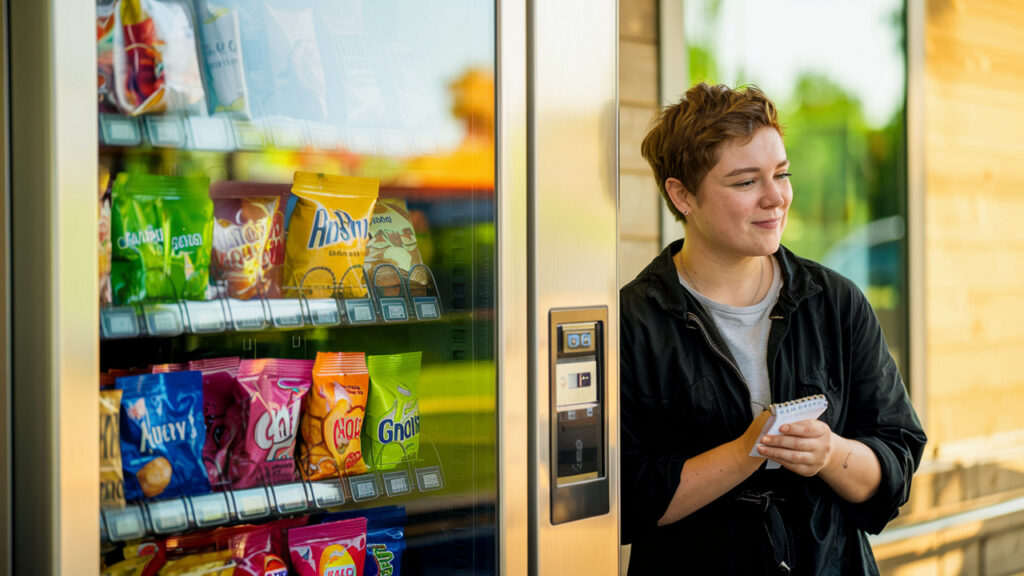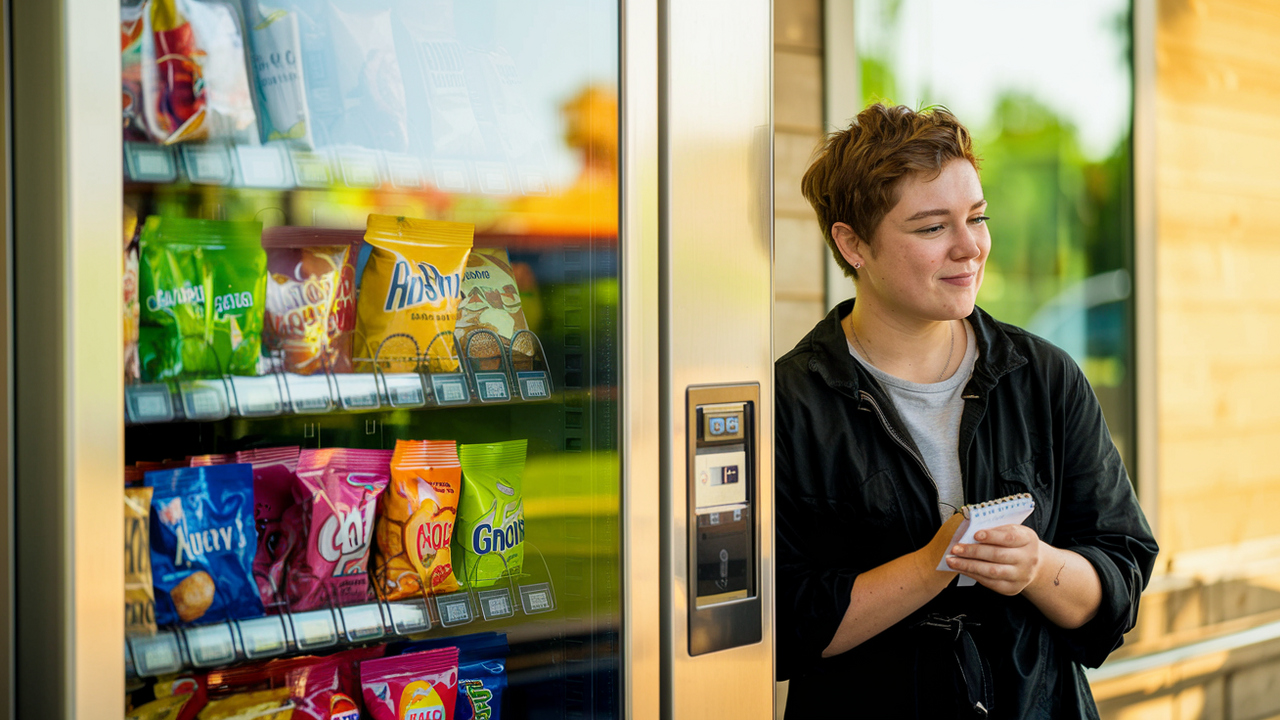What to Look for When Buying Your First Vending Machine
Starting a vending machine business can be a smart and low-overhead way to generate passive income. But before you rush into your first purchase, you need to know what separates a good investment from a costly mistake. Your vending machine is the foundation of your business — and choosing the right one from the start is critical.
In this post, I’ll break down what to look for when buying your first vending machine, including the types of machines, features that matter, and red flags to avoid.

Table of Contents
Featured Snippet
What should I look for when buying a vending machine?
Look for a machine that fits your product type, location size, and payment preferences. Important features include machine condition, cashless payment compatibility, energy efficiency, ease of maintenance, and supplier warranty.
1. Know What You Want to Sell
Start by deciding whether you want to sell:
- Snacks only
- Drinks only
- Combo (snacks + drinks)
- Specialty products like coffee pods, PPE, or beauty items
Your product category determines the machine size, internal layout, cooling system (if any), and necessary features.
2. Consider New vs. Used Machines
New machines come with warranties, modern features, and fewer maintenance worries — but they’re more expensive (typically $3,000–$8,000+).
Used or refurbished machines are more budget-friendly ($1,500–$4,000), but you need to vet the condition, parts availability, and service history.
If going used, buy from a reputable vending equipment dealer, not Craigslist or eBay sellers without reviews.
3. Choose the Right Size
Measure your target location first. A standard full-size machine is 35-40″ wide, 30-34″ deep, and 70-75″ tall.
If you’re placing it in a small office or hallway, you might need a compact or countertop vending machine instead.
Don’t forget: You’ll need clearance for the door to swing open, as well as proximity to a power outlet.
4. Prioritize Cashless Payment Support
Many customers expect to pay with credit cards, Apple Pay, or Google Pay. Choose a machine with a built-in card reader or the ability to add one (MDB-compatible).
Cash-only machines can still work, but they limit your customer base — especially in offices, schools, and tech-savvy environments.
5. Refrigeration (If Selling Drinks)
If you plan to sell cold beverages, make sure the vending machine includes a reliable, energy-efficient refrigeration system.
Look for machines with dual-zone cooling if you want to stock both snacks and drinks in one unit.
Avoid older used machines with aging compressors, unless they’ve been recently replaced or refurbished.
6. Easy Stocking and Maintenance
Your first machine should be easy to refill and service. Look for:
- Adjustable trays and spirals for different product sizes
- Clear product windows and LED lighting
- Simple inventory tracking options (manual or digital)
Machines with telemetry and remote inventory monitoring are ideal if you plan to scale later.
7. Warranty and Parts Availability
Make sure your machine comes with at least a 90-day to 1-year warranty.
Check whether the brand has readily available replacement parts and service documentation. Avoid rare or off-brand machines with poor support — they’re harder to maintain and repair.
8. Vendor Reputation and Reviews
Buy from suppliers with verified reviews and industry experience. Some trusted sources include:
- eVending
- Vending.com
- CandyMachines.com
- A&M Equipment Sales
- Vendnet
Avoid sellers who can’t answer basic questions or don’t offer tech support.
9. Budget for Additional Costs
Beyond the machine itself, plan for:
- Card reader (if not included): $200–$400
- Initial inventory (snacks, drinks): $300–$500
- Dolly/cart for transport: $150+
- Business licenses or permits (if needed)
Having a complete picture of your upfront costs helps you manage cash flow and ROI expectations.
10. Placement is Just as Important
Even the best machine won’t perform if it’s in a bad location. Choose high-foot-traffic areas like:
- Schools
- Apartment buildings
- Laundromats
- Gyms
- Offices
Negotiate placement agreements where you split profits or pay a flat fee for space access.
Final Thoughts
Your first vending machine sets the tone for your business. Make sure it’s:
✅ The right type for your product
✅ The right size for your space
✅ Compatible with modern payments
✅ Easy to maintain and reliable
Start smart, keep your machine stocked with products people actually want, and focus on location strategy — that’s the foundation of a profitable vending business.
If you’re buying your first vending machine, one smart approach is to start with just one or two locations. This lets you learn the business hands-on — without overextending your budget. Once you understand stocking cycles, product rotation, and customer preferences, you’ll feel more confident expanding.
Make sure to check local laws and regulations for vending operations in your area. Some cities require permits or health department inspections, especially if you’re selling food or beverages. Avoid surprises by researching your local zoning or licensing requirements upfront.
If you’re planning to scale later, it’s better to buy machines that are modular and upgradeable. Look for models that let you swap trays, add screens, or connect to remote inventory tracking software as your route grows.
Some vending machine models come with built-in LED advertising displays, allowing you to run promotions, display product info, or even sell ad space. While this may not be essential at first, it’s a nice feature if you plan to operate in retail, school, or corporate settings.
Many first-time buyers forget to test the door lock and key system before finalizing a purchase. Make sure the lock works smoothly, and that you’re given all copies of the machine’s keys. Consider changing the lock once the machine is yours, especially if you’re buying it used.
Check the spiral coil spacing and tray height to ensure they match the products you plan to stock. If you want to sell wide items like bottled water or chip bags, make sure your trays have enough clearance and your coils can be adjusted.
If possible, buy from a supplier that offers training, manuals, and support. Even with a simple vending machine, having technical documentation or a phone number to call when something jams can save you hours of frustration.
Don’t skip over power requirements. Most vending machines run on standard 110v outlets, but some require a dedicated circuit. Check this before delivery so you don’t run into electrical issues once it arrives.
Consider machines that support inventory tracking apps or telemetry integration. Even if you don’t use it immediately, having that capability means you can automate inventory management later — especially useful if you plan to manage multiple machines.
Ask your supplier about delivery and placement assistance. These machines are heavy (often over 500 lbs), and moving one without a dolly or liftgate delivery truck can be dangerous. Professional delivery may cost extra but it’s often worth it.
Don’t be afraid to buy refurbished — just make sure it comes from a reputable refurbisher who’s replaced key parts like motors, coin mechanisms, and refrigeration units. Ask what was tested and whether the machine was cleaned and updated to current compliance standards.
Finally, remember that your vending machine is a business asset, not just a box that holds snacks. Keep records of your purchase, maintenance, and revenue — and make sure you treat it like a small business from day one.

